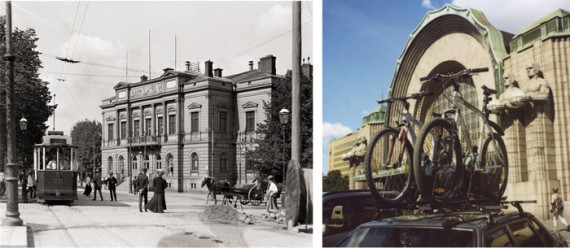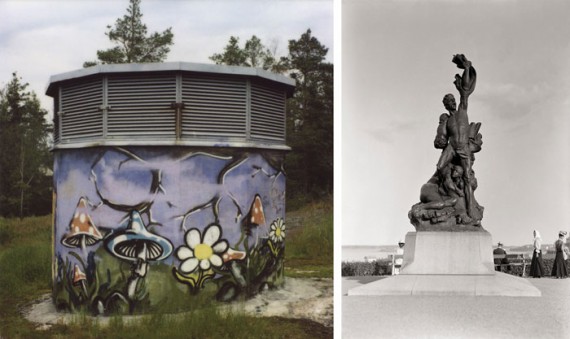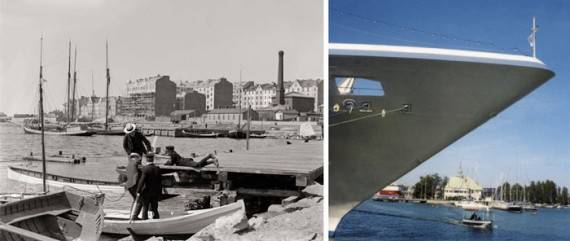Worlds apart
18 June 2009 | Extracts, Non-fiction

Helsinki boys by the sea: in Martti Jämsä’s Polaroid lads play on the beach; in I.K. Inha’s photograph (Hietalahden satama, ‘Hietalahti harbour’), taken a century earlier, barefoot urchins meet up on the quayside
A hundred years ago the photographer I.K. Inha (1865–1930) was asked to illustrate a tourist guide to Helsinki. He took some 200 photographs, of which some 60 were included in the book, which was published by WSOY in 1910. In his new book of photographs, OPS! Helsinki Polaroid¹, Martti Jämsä (born 1959), wanders the same streets a century on, taking snapshots with his Polaroid camera.
Inha’s glass negatives were stored in the publisher ‘s archives, where they remained until 2006, when they were moved to the Finnish Museum of Photography. Polaroid is now an obsolete piece of technology: the last examples were made by the American Polaroid Company in 2007. The familiar softness and fogginess of the details in Polaroid shots evoke a kind of nostalgia for the present.
Inha’s summery photographs, of a small but rapidly expanding town full of new buildings, offer a vivid portrait of life in what was then the Grand Duchy of Finland. His city studies were reprinted this year in Helsinki, valon kaupunki/ Helsingfors med I. K. Inhas ögon (‘Helsinki, city of light’)².
The two photographers occasionally choose the same vistas and subjects, looking at details of Helsinki from the same angles; the time and the methods are different, their worlds are worlds apart, but they offer fascinatingly dual readings of the city and its people.

Modes of transport: ‘Ylioppilastalo ja Raitiotietori’ (‘Student House and Tramway Square’) by I.K. Inha and wheels on wheels in front of the Railway Station now by Martti Jämsä

Monumental styles: contemporary street art in Martti Jämsä’s Polaroid shot, and I.K. Inha’s ‘Haaksirikkoiset’, ‘The shipwrecked’ (sculpted by Robert Stigell) on Tähtitorninmäki (‘Observatory Hill’) in 1908

Seascapes: Inha's photograph of maritime Helsinki (entitled Merisatama, ‘Sea Harbour’) a century ago, and a contemporary Polaroid shot of Helsinki harbour Polaroid by Jämsä

Forever the national poet: two views of J.L. Runeberg’s statue (1885) in the Esplanade Park; the Polaroid by Martti Jämsä and a view of the Hotel Kämp and the Grönqvist house by I.K. Inha

Windows on two centuries: ‘Oikokatu’ (‘Oikokatu street’) in the Kruununhaka district of Helsinkiby I. K. Inha, 1908, and a contemporary façade by Martti Jämsä
¹Martti Jämsä
OPS! Helsinki Polaroid
(Photographs by Martti Jämsä, an essay by Otso Kantokorpi, a poem by Ilpo Tiihonen; Musta Taide, 2009)
²Jukka Kukkonen – Riitta Toiviainen – Kjell Westö (ed.)
Helsinki – valon kaupunki / Helsingfors med I. K. Inhas ögon
(‘Helsinki – city of light’, WSOY, 2009, a publication of the Finnish Museum of Photography)
Tags: Helsinki, photography
No comments for this entry yet
